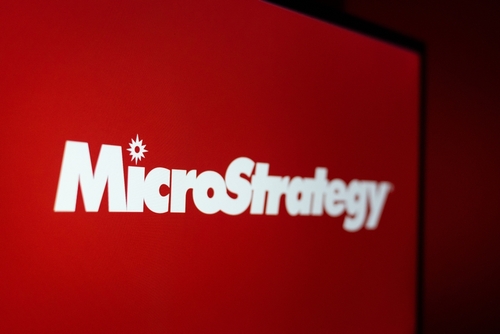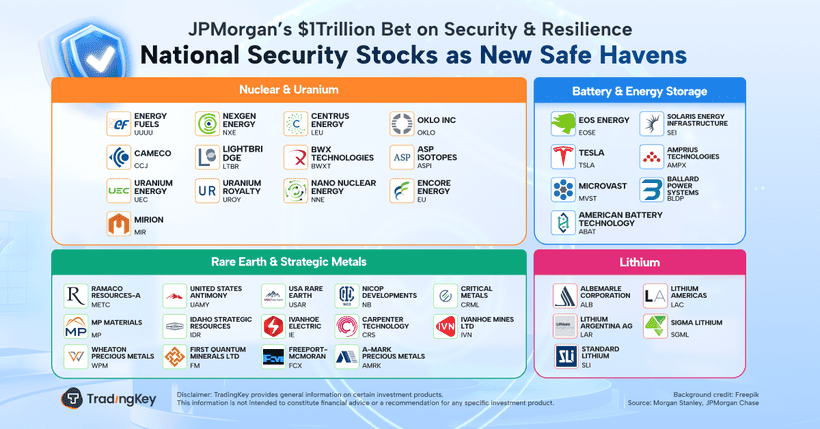5 Principles Behind Warren Buffett’s $100B Portfolio


TradingKey - Everyone knows Warren Buffett. He’s one of the most successful investors of all time, with a fortune of over US$100 billion. He bought his first stock when he was 11, became the CEO of Berkshire at 35, and continues to hold the role today. The big question here is: How did he do it? What’s his strategy? Petar Petrov’ll break down the five timeless principles behind Buffett’s wealth and explore how retail investors like you and I can apply these strategies to our everyday investing.
The full text of the script is as follows:
Everyone knows Warren Buffett. He’s one of the most successful investors of all time, with a fortune of over US$100 billion. He bought his first stock when he was 11, became the CEO of Berkshire at 35, and continues to hold the role today. The big question here is: How did he do it? What’s his strategy?
Hi everyone, I’m Petar Petrov, senior analyst at TradingKey. In this video, we’ll break down the five timeless principles behind Buffett’s wealth and explore how retail investors like you and I can apply these strategies to your everyday investing.
Before we start, remember to tap the like button, and without further ado, let’s dive into the details.
The first principle is Value Investing. Value investing is all about finding companies whose stock prices are lower than their intrinsic value. Buffett’s core philosophy was shaped by his mentor, Benjamin Graham. When he first started investing, he followed Graham’s “cigarette butt” strategy of finding distressed companies with just a little value left. After partnering with Charlie Munger, Buffett has since refined his approach to focus not just on undervalued companies, but on great businesses at reasonable prices.
As Buffett once said, “Price is what you pay, value is what you get.”
The second principle is Prioritising Long-Term Outlook. As a value investor, Buffett believes in holding assets for the long term as it takes time for the market to value it correctly. He famously avoids checking stock prices daily because to him, short-term market fluctuations are irrelevant in the bigger picture. This contrarian mindset allowed him to sidestep the dot-com bubble in the early 2000s and go all-in during the 2008 financial crisis.
Buffett shares, “If you aren’t willing to own a stock for 10 years, don’t even think about owning it for 10 minutes.”
The third principle is Investing in Business Moats. As a long-term investor, Buffett favours companies with a proven track record of long-term development potential. These include brand power, pricing control, and cost leadership. Think of Coca-Cola’s global dominance or Apple’s customer loyalty. These qualities can help companies resist competitive pressure, thereby protecting profitability over time.
He says, “It’s far better to buy a wonderful company at a fair price than a fair company at a wonderful price.”
The fourth principle is Investing in the Company, not the Stock. Buffett doesn’t just “buy stocks”, he views it as an “acquisition of a business”. Therefore, he goes to great lengths to fully understand what the business does, its operations and products. This is also one of the reasons why he famously avoids speculative assets like crypto. More importantly, Buffett attaches great importance to the quality of management, as highly capable management drives long-term success.
He shares, “I try to invest in businesses that are so wonderful that an idiot can run them. Because sooner or later, one will.”
The fifth and final principle is Understand Risk. While traditional finance defines risk as volatility, Buffett sees it very differently. To him, risk isn’t about how often a stock moves, it’s about whether you could permanently lose money. Buffett believes real risk comes down to three things: Whether you can confidently assess a company’s intrinsic value, whether you're willing to hold for the long term, and whether the business itself is fundamentally sound and predictable. He often refers to the market as Mr. Market, a moody business partner who shows up every day with a different price. Some days he’s euphoric (prices are up), other days he’s depressed (prices go down).
One of his saying goes, “When Mr. Market is furious, that’s often the best time to buy high-quality assets.”
Now that we understand the key metrics Buffett uses to evaluate a company, the next question is, how does this play out in real life?
Let’s take a closer look at his actual portfolio, starting with Apple. Even though Buffett has traditionally stayed away from fast-changing sectors like tech, he made a rare exception here. He began building a position in Apple back in 2016, and today, it stands as Berkshire Hathaway’s largest holding.
Well, why would he break his own rule? Firstly, Apple has an incredibly strong balance sheet, a massive cash reserve, and an unparalleled ability to generate free cash flow. Secondly, Buffett saw Apple not just as a tech company, but as a consumer brand with deep loyalty and a durable moat. Even with premium pricing, Apple’s ecosystem keeps customers coming back.
Similarly, Buffett has a liking towards Coca-Cola. He started buying shares in 1988, shortly after the 1987 crash, seeing a long-term opportunity amid market fear. Today, Berkshire owns nearly 9% of the company, reaping close to a billion dollars annually in dividends. What truly drew him in was Coca-Cola’s global dominance, massive brand portfolio, and near-impenetrable market position. It checks all his boxes of consistent earnings, brand strength, pricing power. Yes, Buffett himself drinks several cans a day.
In addition, Buffett’s financial holdings are also worth noting. Bank of America and American Express represent two of his largest bets in the sector. He has spent decades in insurance and financial services, fully understanding how these businesses operate.
At the 2025 Berkshire Hathaway shareholders meeting, Buffett addressed the elephant in the room, AI. While he acknowledged its importance, he has made it clear that he’s staying on the sidelines for now. This aligns with his principles, as he’s not one to invest in companies just because they’re trending. Without a clear, proven business model or long-term moat, he’s content to wait, even if that means missing out on names like Nvidia.
His patience is reflected in Berkshire’s record cash position of US$347.7 billion as of Q1 2025. Recent filings reveal new positions in Constellation Brands and Domino’s Pizza, signaling quiet confidence in the consumer and food sectors.
Buffett’s success doesn’t come from chasing trends. It comes from sticking to what he knows and waiting for the right pitch. Whether it’s Apple, Coca-Cola or American Express, his investments reflect deep conviction, not speculation.
For everyday investors, there’s plenty to take away. Stay in your circle of competence. Prioritize durable businesses. Be patient. And when opportunity strikes, act with confidence.
If you’d like to track Buffett’s moves in real time, check out our Star Investors tool at tradingkey.com. Get access to detailed sector allocations and 13F filings from over 100 top investors, all in one place.
If you found this breakdown helpful, be sure to like the video, subscribe, and drop your thoughts in the comments, we’d love to hear what you think of Buffett’s strategy.
Stay informed, stay strategic, and we’ll see you in the next one!







